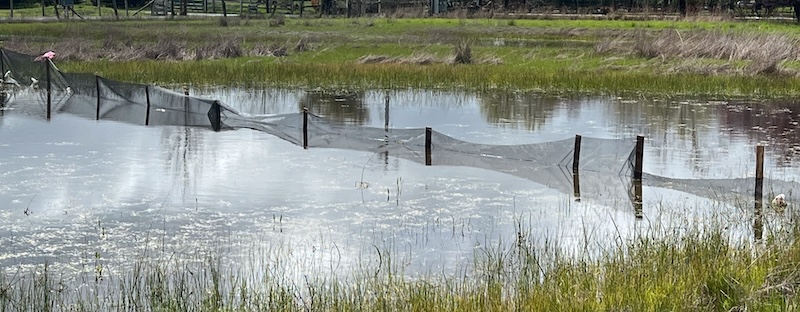Earlier this month, SSU graduate student Jesse Schmieg offered my Vertebrate Biology students an amazing experience: my students were hosted at Jesse’s field site, where they are researching the interactions between larval tiger salamanders and predaceous diving beetles in seasonal pools. Our main task of the day: to help Jesse set up this season’s experiment. This involved “bisecting” each vernal pools into two halves, using mesh fencing. Throughout the season, Jesse and their team of research assistants will remove predaceous beetle larvae from one half of each pool, while leaving the beetle population undisturbed in the other half. Then, they will perform monitoring to see if there is any difference in the salamander populations related to the removal of these insects.






Several of my students were able to get geared up in waders to help set up the fencing, and, later, to do the first round of monitoring in the pools. I waded in to do some dip netting, myself. The weather refused to make up its mind, going from chilly and slightly foggy, to overcast and warm, drizzly, an outright downpour, and then, by late afternoon, clearing to the most gorgeous blue sky with fluffy clouds overhead. And of course, while we were on site, we saw a variety of other wildlife, as well, so my students had the chance to practice their identification skills (particular on the local birds).









It was a fantastic day, and offered my students something very few people will ever experience: an opportunity to learn about and work on a project involving an endangered species, in a gorgeous field location. And, at times, in the pouring rain. (Which, after all, is part of what field work is all about).
Thanks so much to Jesse, for being so generous with their time! And I was glad to hear that my students put in some genuinely helpful work on this project, getting the experiment set up, which made for a true win/win experience.

